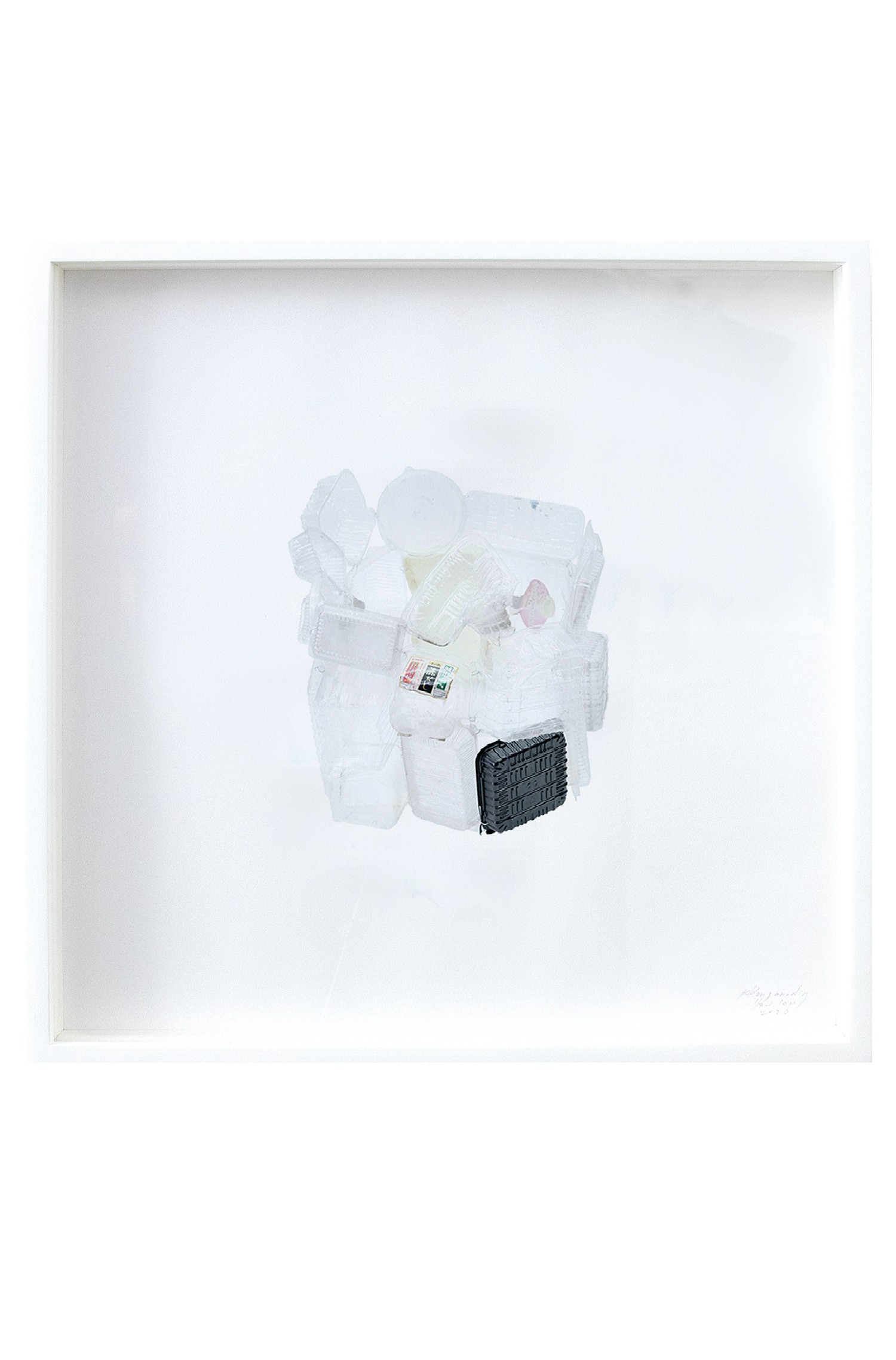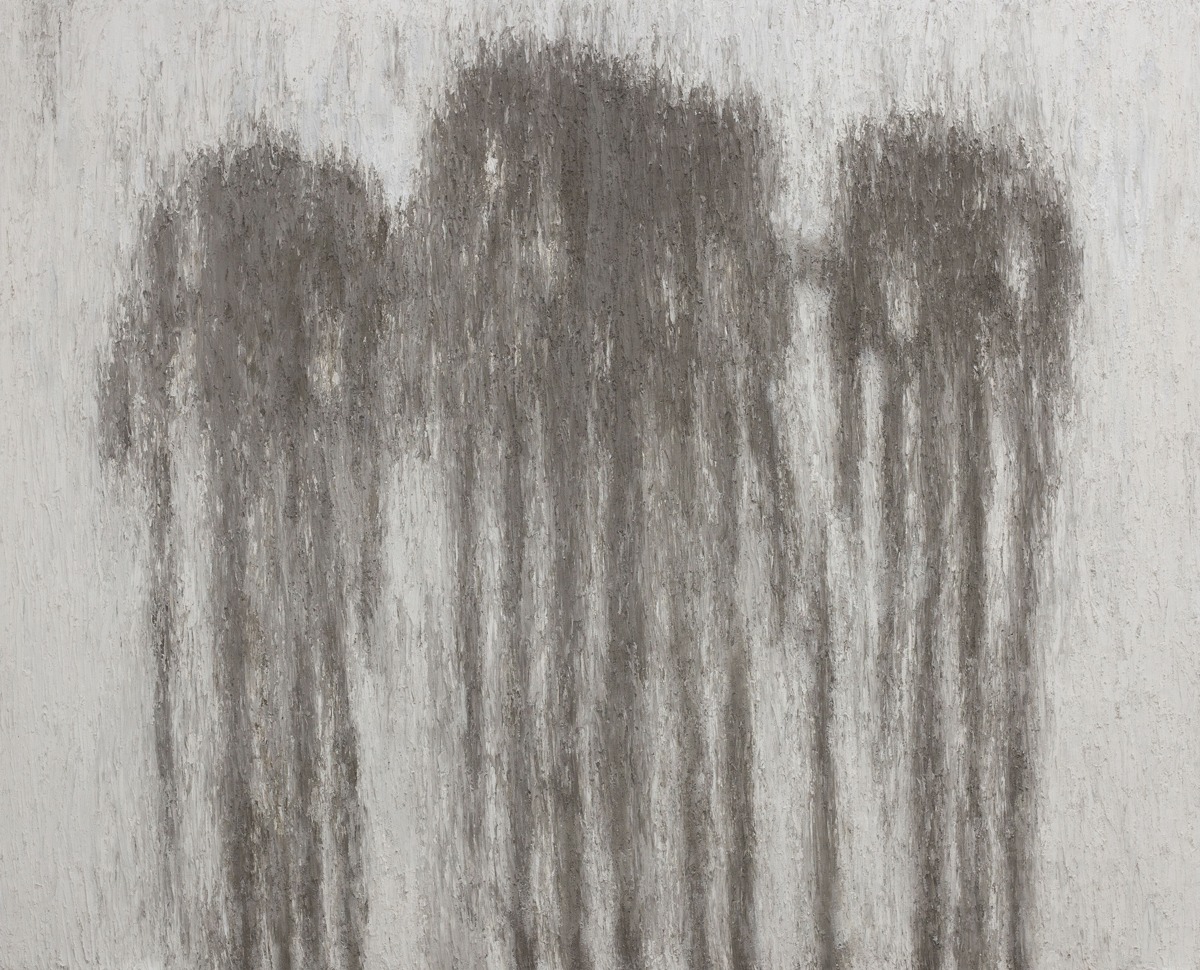
In his first online viewing room for Silverlens, Poklong Anading highlights works from the last three years. This is the artist’s third solo exhibition at Silverlens and his first as an artist represented by the gallery.
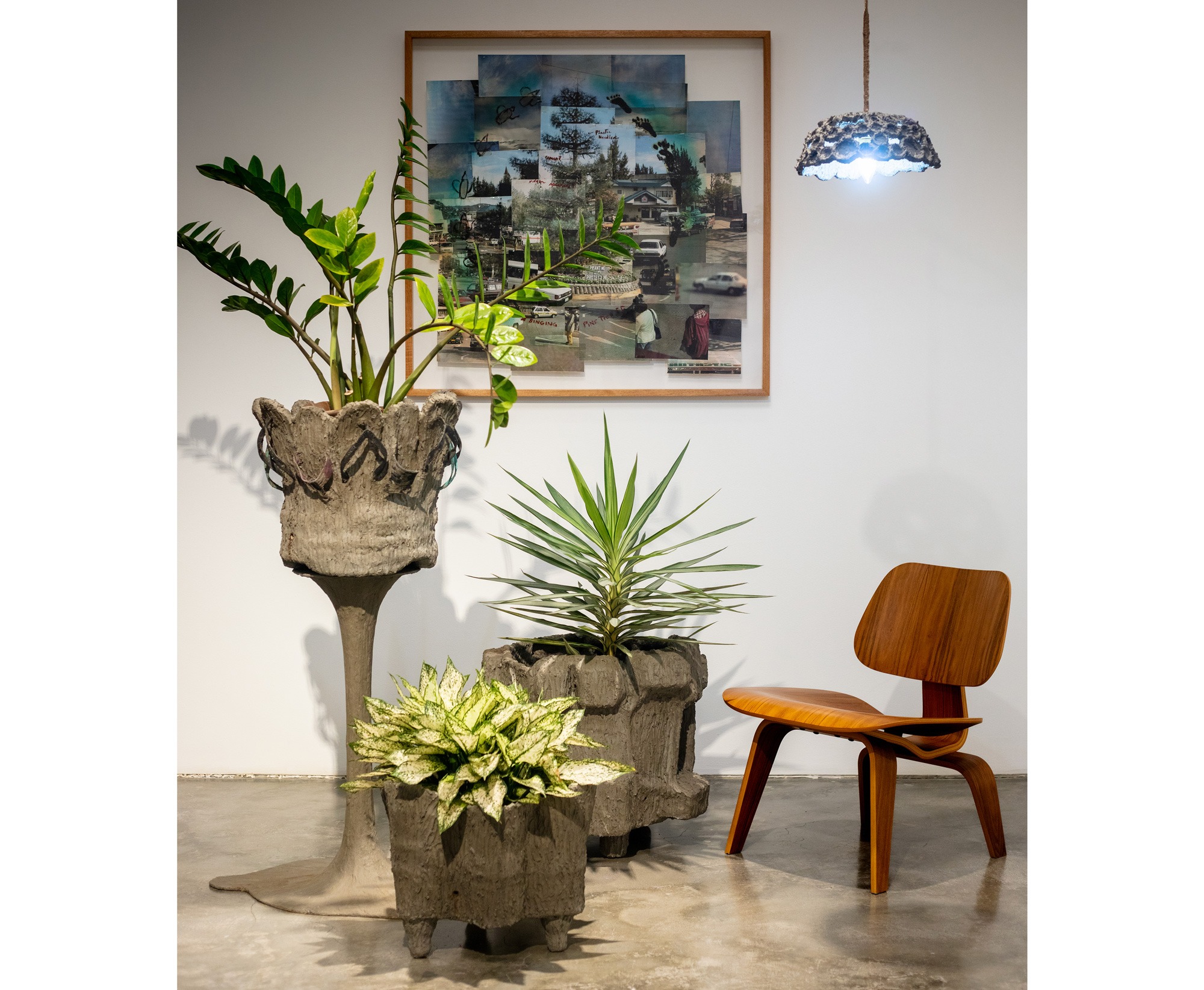
Poklong Anading, growing sound (no. 22), growing sound (no. 31), growing sound (no. 20), 2021. Plant, soil, plastic food
container, and cement. light suffers if there’s no place to fall to (no. 33), 2021. LED light, plastic food container, and cement.
These selected artworks prominently feature cement—the binding ingredient of concrete—signifying urban development as well as environmental degradation. (Next to the fossil-fuel industry, cement manufacturing has been identified as a major source of the world’s carbon emissions.)
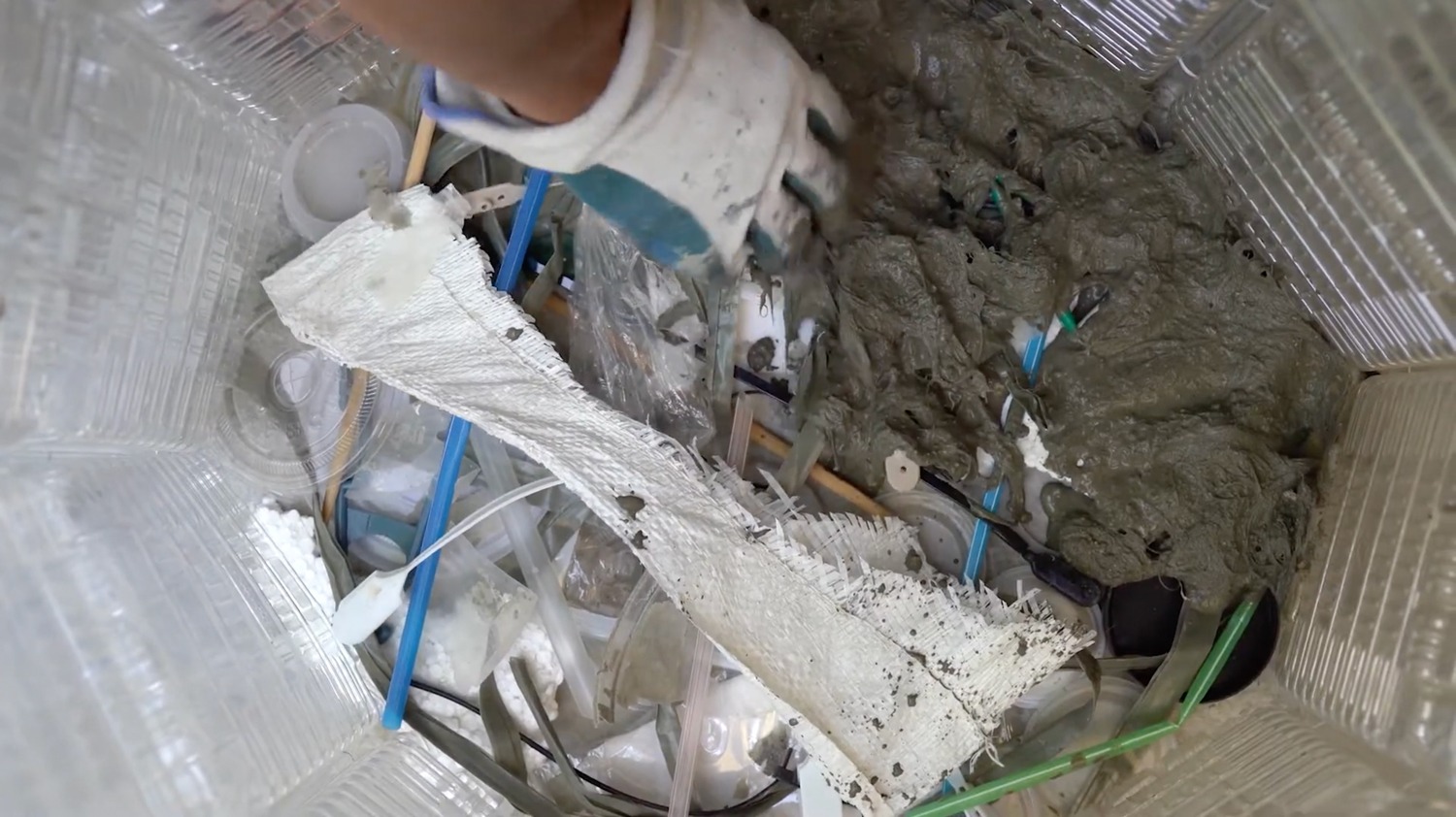
Poklong Anading, work in progress.
In Anading’s hands, this material becomes a medium for contemplating the life- and waste-cycles of urban, consumerist existence.

Poklong Anading, work in progress.
In Anading’s hands, this material becomes a medium for contemplating the life- and waste-cycles of urban, consumerist existence.
For his series of works titled light suffers if there’s no place to fall from and growing sound, he collected his empty food containers and other discarded household objects, and—in a whimsical version of carbon sequestration—he encased these forms in cement to transform them into planters and light fixtures for growing indoor gardens.

Poklong Anading, work in progress and final artworks.
Emphasizing the transformation of empty trash containers into vessels for light and life, Anading textured their surfaces to mimic the barks of trees and shaped them to resemble the organic shapes of plants and flowers.
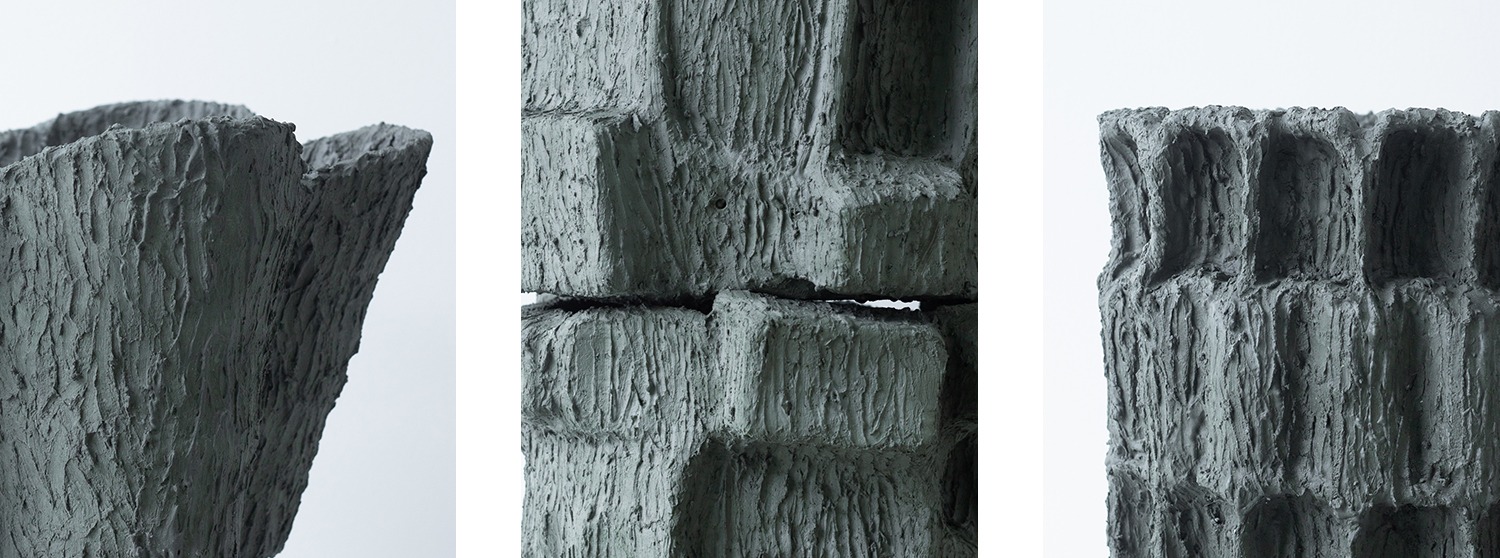
(L-R) growing sound (no. 20), growing sound (no. 31), growing sound (no. 28), 2021.
Plant, soil, plastic food container, and cement (detail)
The only wall-bound artwork in this selection, the cement-covered painting titled falling and growing (no. 9) continues the artist’s exploration of the porous boundaries between decay and revitalization.
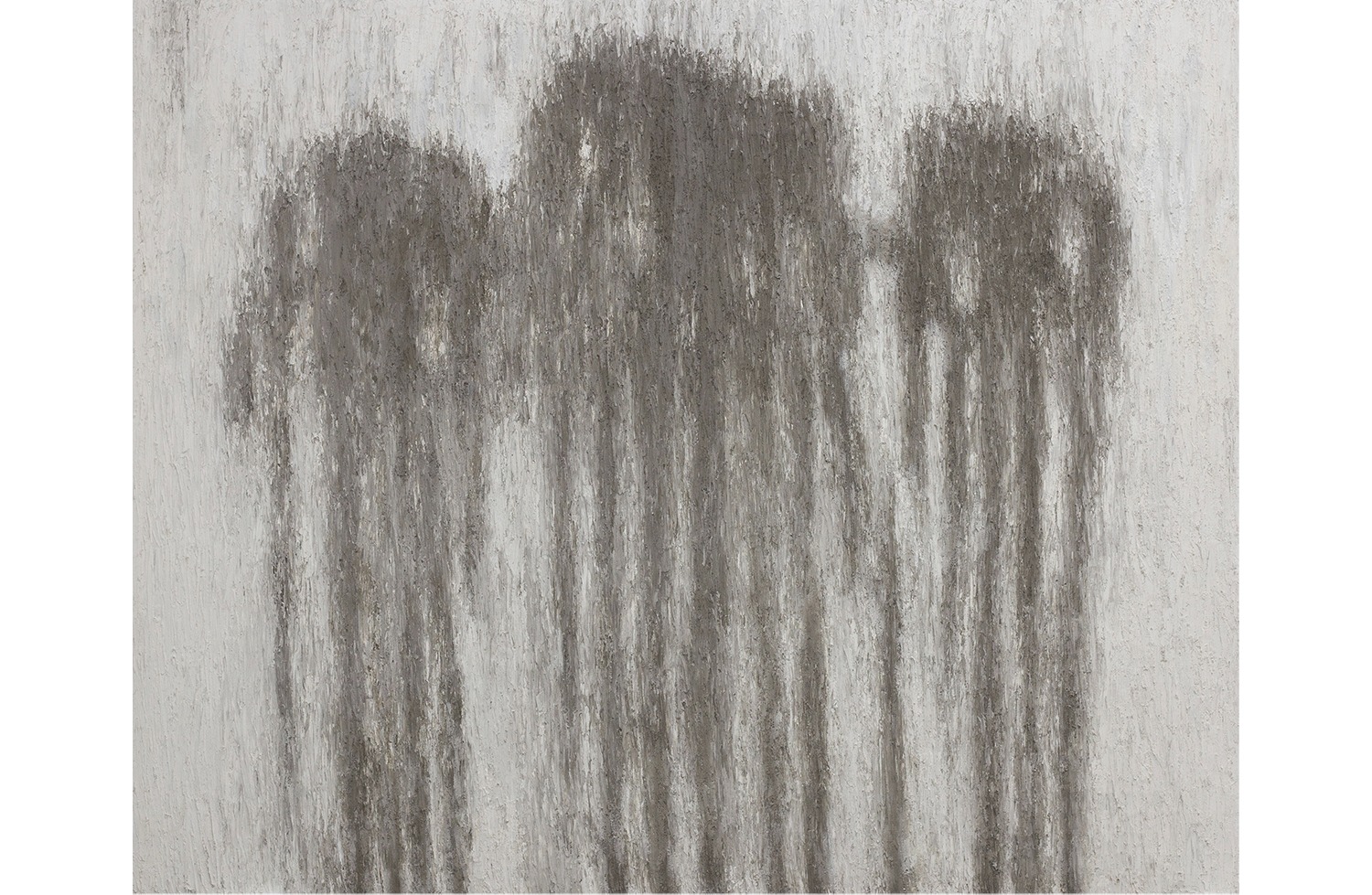
Poklong Anading, falling and growing (no. 9), 2022,
traces of urine, cement, and wooden baseboard.
In this piece, the traced patterns of Anading’s urine streaks call to mind the rising shapes of trees, a light-hearted nod to the burgeoning “peecycling” movement advocating for the use of human urine as a natural fertilizer.

Poklong Anading, growing sound (no. 28), 2021. Plant, soil, plastic food container,
and cement (detail)
By incorporating his own waste into his work, Anading makes a similar case for artmaking—how the detritus of everyday life can be salvaged through creative practice.
– Jose Beduya

Poklong Anading, growing sound (no. 28), 2021. Plant, soil, plastic food container,
and cement (detail)
By incorporating his own waste into his work, Anading makes a similar case for artmaking—how the detritus of everyday life can be salvaged through creative practice.
– Jose Beduya
About
Poklong Anading’s practice utilizes a wide range of media from drawing, painting, video, installation, photography and object-making. Taking a more process-oriented and conceptual approach, his continuing inquiry takes off from issues on self-reflexivity, both of himself and others, and site-specificity in an ongoing discussion about society, time and territory.
Born in 1975 Manila, Philippines. He earned a Bachelor of Fine Arts (BFA) in painting from the College of Fine Arts, University of the Philippines (1999). He completed residencies with Big Sky Mind, Manila, Philippines (2003 to 2004), Common Room, Bandung, Indonesia (2008), Bangkok University Gallery, Thailand (2013), Selasar Sunaryo Art Space, Bandung, Indonesia (2013), Philippine Art Residency Program - Alliance Francaise de Manille in Cite Internationale des Arts, Paris, Centre Intermondes, La Rochelle in France (2014) and das weisse haus, Vienna Austria (2018). He had solo exhibitions in Galerie Zimmermann Kratochwill, Graz, Austria (2010 and 2012), Taro Nasu in Japan and Athr Gallery in Jeddah (2016), 1335MABINI in Manila, Philippines (2013, 2015 and 2017). He has been included in notable group exhibitions such as: Gwangju Biennial, South Korea (2002 and 2012), No Country: Contemporary Art for South and Southeast Asia, the first exhibition of the Guggenheim UBS Map Global Art Initiative in New York, Hong Kong and Singapore (2013 to 2014), 5th Asian Art Biennial: Artist Making Movement, National Taiwan Museum of Fine Arts, Taiwan (2015), The Shadow Never Lies, Minsheng Art Museum, Shanghai, Afterwork, Para Site, Hong Kong, China and in the Architecture Biennale for the 15th International Architecture Exhibition, Philippine Pavilion: Muhon: Traces of an Adolescent City at Palazzo Mora, Venice, Italy (2016) and Constellations, Photographs in Dialogue, SFMOMA, California, USA 2021.
Anading lives and works in Manila.
Works






